Understanding forces Normal Physical Science Worksheets for Ages 3-8
6 filtered results
-
From - To
Discover the world of forces with our "Understanding Forces" physical science worksheets, specially designed for ages 3-8. These engaging worksheets make learning fun and interactive, helping young learners grasp fundamental concepts of pushes and pulls, gravity, and other forces. Through hands-on activities and vibrant illustrations, kids will explore how forces affect the motion and shape of objects. Make science exciting and accessible, fostering curiosity and foundational skills that will last a lifetime. Ideal for both classroom instruction and at-home enrichment, this collection is your key to captivating young minds with the wonders of physical science.
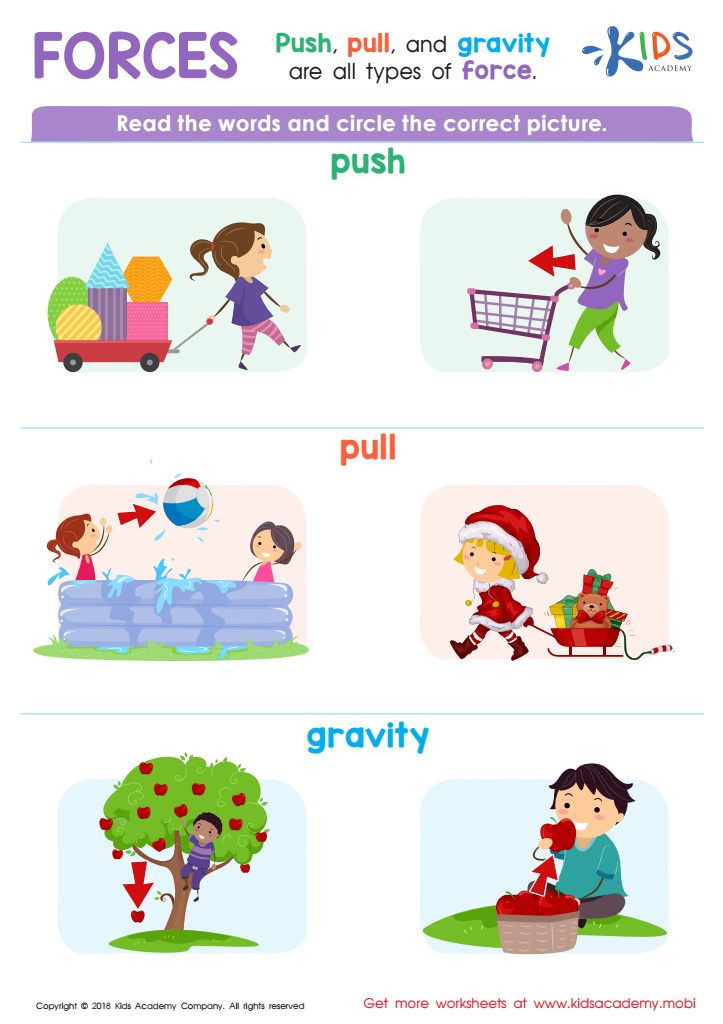

Forces Worksheet


Forces and Interactions Printable
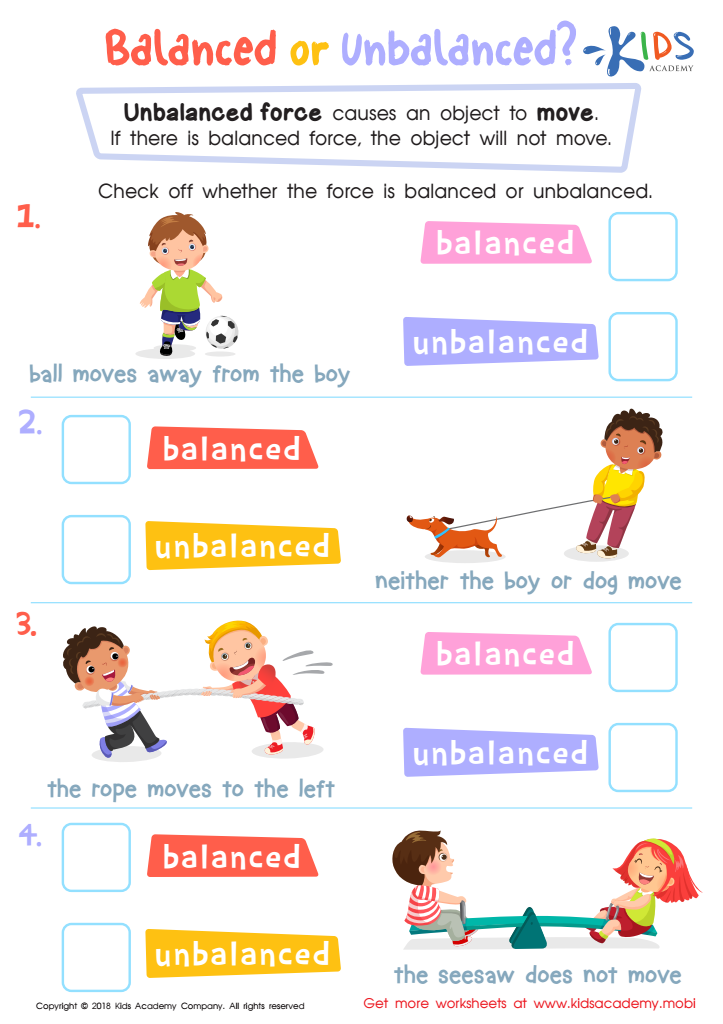

Balanced or Unbalanced Science Worksheet
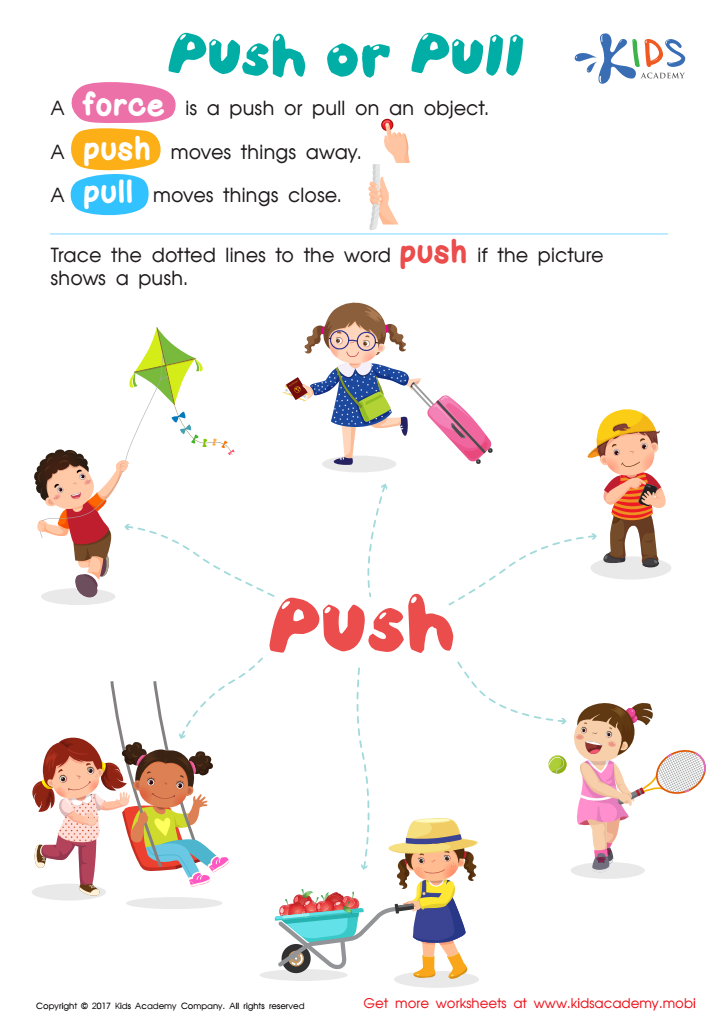

Push or Pull Worksheet
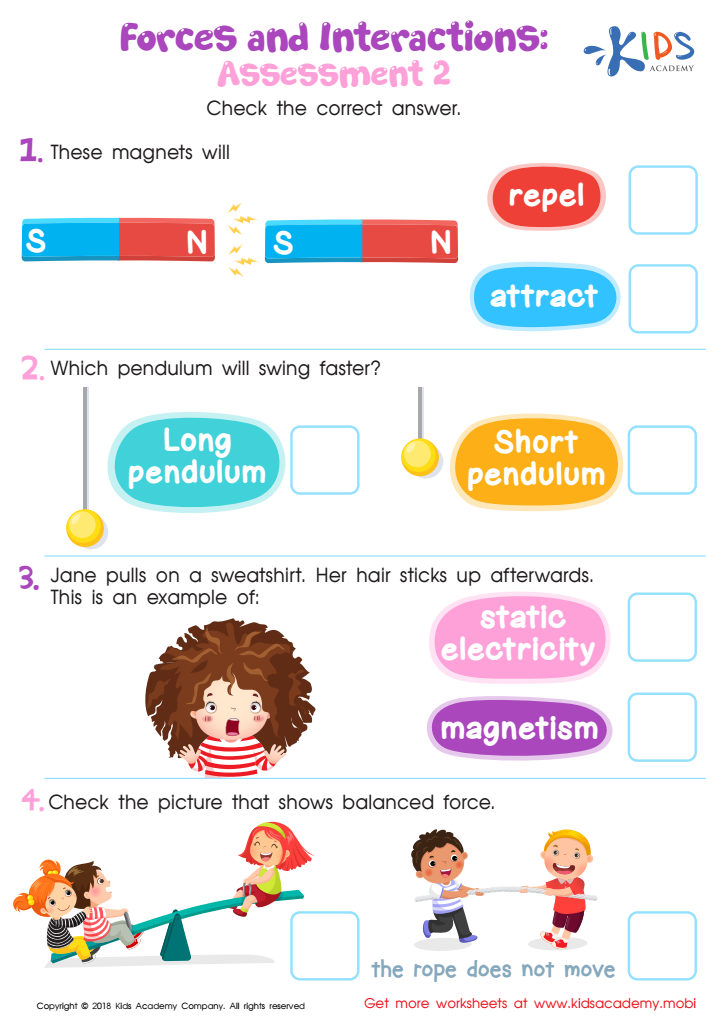

Forces and Interactions Worksheet For 3rd Grade
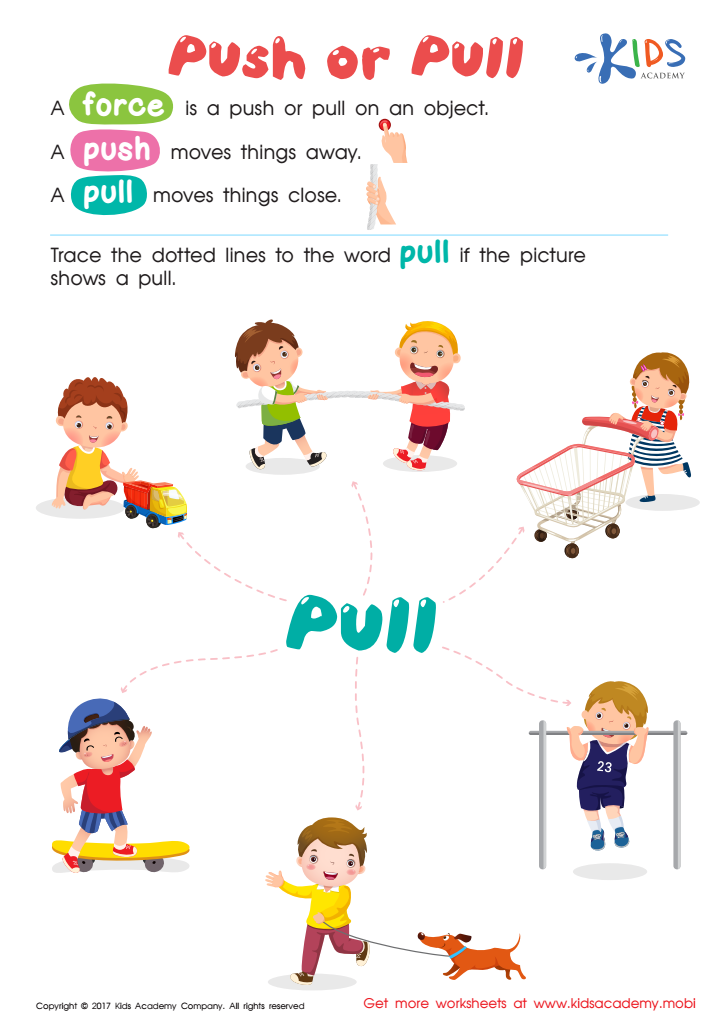

Pull or Push Worksheet
Understanding forces in physical science for children aged 3-8 is crucial as it lays the groundwork for a multitude of critical thinking skills and a deeper appreciation of the natural world. At this formative stage, children are naturally curious and constantly engaging with their environment through play and exploration. Introducing basic concepts of forces – such as pushes, pulls, gravity, and friction – not only satiates their curiosity but also enhances their cognitive development.
First, understanding forces helps children make sense of everyday experiences. When they learn why a ball rolls, why objects fall to the ground, or why it's easier to slide on a smooth surface, they build foundational scientific knowledge that will support future learning in more advanced topics.
Second, engaging with these concepts through hands-on activities encourages problem-solving and experimental skills. For instance, experimenting with different surfaces to understand friction can promote critical thinking and cooperative play.
Lastly, early exposure to scientific principles fosters a positive attitude towards learning and STEM (Science, Technology, Engineering, and Mathematics) subjects. It empowers children with the confidence to question, experiment, and understand their world, cultivating a lifelong interest in science.
Teachers and parents who prioritize teaching about forces at an early age are investing in the cognitive and scientific literacy of their children, providing them with tools to think critically and learn effectively throughout their educational journeys.
 Assign to My Students
Assign to My Students




















